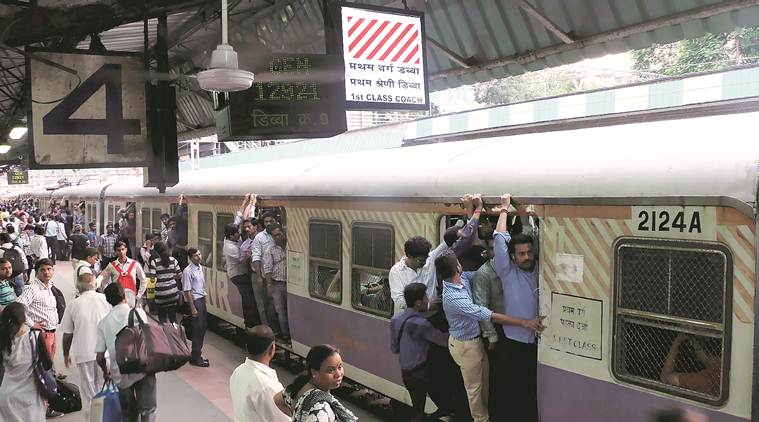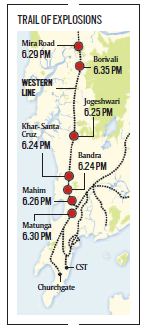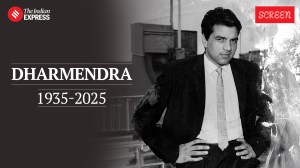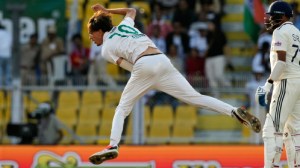Stay updated with the latest - Click here to follow us on Instagram
2006 Mumbai blasts: Railway officials recall working through the night to get trains moving again
On Friday, as 12 out of the 13 accused were convicted, railway officials recounted the “war-like situation”.
 Location at Platform No 4 where 7/11 Train Blast happened in Borivili station at approximately 6.35 Pm. (Express Photo by Amit Chakravarty)
Location at Platform No 4 where 7/11 Train Blast happened in Borivili station at approximately 6.35 Pm. (Express Photo by Amit Chakravarty)
JUST FOUR hours after the lifeline of Mumbai came to a standstill, an army of determined men managed to get the Western Railway up and running. As officials would later reveal, the then prime minister Manmohan Singh had sent a message: “Get the railways back up if possible, it’s a message to the terrorists.” By midnight, the then railway minister Lalu Prasad had arrived in the city, too.
On Friday, as 12 out of the 13 accused were convicted, railway officials recounted the “war-like situation”.
As soon as reports of the blasts came in, top Western Railway officials rushed from their headquarters in Churchgate to the control room in Mumbai Central. Power had been switched off on tracks, roads were blocked and cell-phone signals were jammed.
[related-post]
“After reaching the control room, we tried to gather information to understand the extent of damage to local trains. I was there the entire night; it was a war-like situation. We were afraid one more blast might occur,” said Satyaprakash, the then DRM.

R K Rao, who was general manager of Western Railway at the time, was on his way to Malegaon when the blasts occurred. He turned back, but was only able to reach as far as Dahanu, and the responsibility fell on the then additional general manager Vivek Sahai.
“Everyone worked like an army, and it was because of this that we could start running trains between Mahalaxmi and Bandra within five hours. It was also possible because there was no derailment or Over Head Equipment (OHE) breakdowns. Most of the affected trains were Virar bound and the blasts occurred in first-class compartments. No motor coaches were damaged,” Sahai said.
Coordination with their own men proved to be a big problem for officials as cell-phone signals were jammed. Officials gathered around TV sets to get updates of the blast and the humble landline phone came in handy.
At 10.10 pm, a meet was held between the then CM Vilasrao Deshmukh, police commissioner A N Roy, bureaucrats and Sahai. Deshmukh asked Sahai whether he was in a position to run trains that night. Sahai replied that he could, but only after the police were done collecting evidence and Roy had given permission. “The damaged side panels of the trains were removed around midnight… We had sent 14 teams to seven locations… We were able to save around 200 people,” Sahai said.







